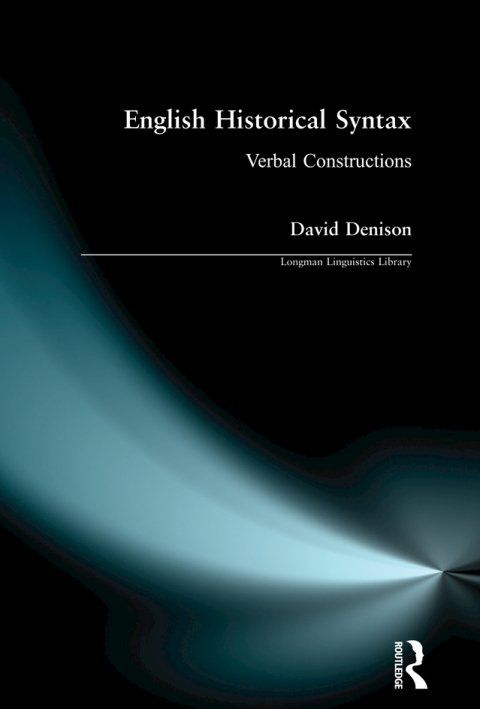Description
Efnisyfirlit
- Cover
- Half Title
- Series Title
- Title
- Copyright
- Contents
- Dedication
- Preface
- Acknowledgements
- Abbreviations
- PART I: GROUNDWORK
- Overview
- 1 Introduction
- 1.1 Data collection
- 1.2 Importance of context
- 1.3 Background knowledge
- 1.4 Sources of information
- 2 Background
- 2.1 Prehistory
- 2.2 Periods of English
- 2.3 A sketch of Old English
- 2.4 A sketch of Middle English
- 2.5 A sketch of Modern English
- 2.6 Further reading
- 3 Nominal morphology
- 3.1 Old English
- 3.2 Middle English
- 3.3 Modern English
- 3.4 Question for further research
- PART II: WORD ORDER
- Overview
- 4 Word order
- 4.1 Introductory remarks
- 4.2 The data
- 4.3 Descriptions and explanations
- 4.4 Synchronic accounts in non-generative linguistics
- 4.5 Synchronic accounts within generative linguistics
- 4.6 Diachronic, non-generative explanations
- 4.7 Diachronic accounts within generative linguistics
- 4.8 Ramifications
- 4.9 Questions for discussion or further research
- PART III: SUBJECT AND VERB PHRASE
- Overview
- 5 Impersonals
- 5.1 The problem
- 5.2 The data
- 5.3 Explanations
- 5.4 Explanations involving reanalysis
- 5.5 An explanation without reanalysis
- 5.6 Explanations involving semantics-based syntax
- 5.7 Other syntactic approaches
- 5.8 Mainly descriptive accounts
- 5.9 Dummy it
- 5.10 Questions for discussion or further research
- 6 Dative Movement and the indirect passive
- 6.1 The problem
- 6.2 The data
- 6.3 Explanations in non-generative linguistics
- 6.4 Questions for discussion or further research
- 7 The prepositional passive
- 7.1 The problem
- 7.2 The data
- 7.3 Explanations in non-generative linguistics
- 7.4 Explanations in generative linguistics
- 7.5 The complex prepositional passive
- 7.6 Indirect and prepositional passives
- 7.7 Questions for discussion or further research
- PART IV: COMPLEX COMPLEMENTATION
- Overview
- 8 VOSI and V+I (Control verbs)
- 8.1 The problem
- 8.2 VOSI
- 8.3 V+I
- 8.4 The data
- 8.5 Explanations
- 8.6 Philological and semantics-based accounts
- 8.7 Accounts in generative syntax
- 8.8 Text-based, structural accounts
- 8.9 Infinitive ± to
- 8.10 Questions for discussion or further research
- 9 Subject raising
- 9.1 The problem
- 9.2 Raising
- 9.3 The data
- 9.4 Explanations
- 9.5 Questions for discussion or further research
- PART V: AUXILIARIES
- Overview
- 10 Origins of periphrastic DO
- 10.1 The problem
- 10.2 The data
- 10.3 Explanations in non-generative linguistics
- 10.4 Explanations in generative linguistics
- 10.5 Questions for discussion or further research
- 11 Modals and related auxiliaries
- 11.1 The problem
- 11.2 Modals in Present-day English
- 11.3 The data
- 11.4 Explanations
- 11.5 Questions for discussion or further research
- 12 Perfect
- 12.1 The problem
- 12.2 The HAVE perfect
- 12.3 Other HAVE + past participle constructions
- 12.4 The BE perfect
- 12.5 Data on the HAVE perfect
- 12.6 Data on the BE perfect
- 12.7 Explanations
- 12.8 Questions for discussion or further research
- 13 Progressive
- 13.1 The problem
- 13.2 Progressives versus related constructions
- 13.3 The data
- 13.4 Explanations of the origins of the OE progressive
- 13.5 Explanations for the ME and ModE progressive
- 13.6 Explanations for the ‘passival’ progressive
- 13.7 Questions for discussion or further research
- 14 Passive
- 14.1 The problem
- 14.2 The data
- 14.3 Explanations
- 14.4 Questions for discussion or further research
- 15 Multiple auxiliaries, regulation of DO
- 15.1 The problems
- 15.2 The data
- 15.3 Explanations of history of auxiliary category
- 15.4 Explanations of regulation of DO
- 15.5 Questions for discussion or further research
- 15.6 Envoi
- PART VI: BIBLIOGRAPHY AND INDEXES
- Glossary of technical terms
- Secondary sources (references) (indexed)
- Primary sources (texts) (indexed)
- Index of verbs in examples
- General index






Reviews
There are no reviews yet.